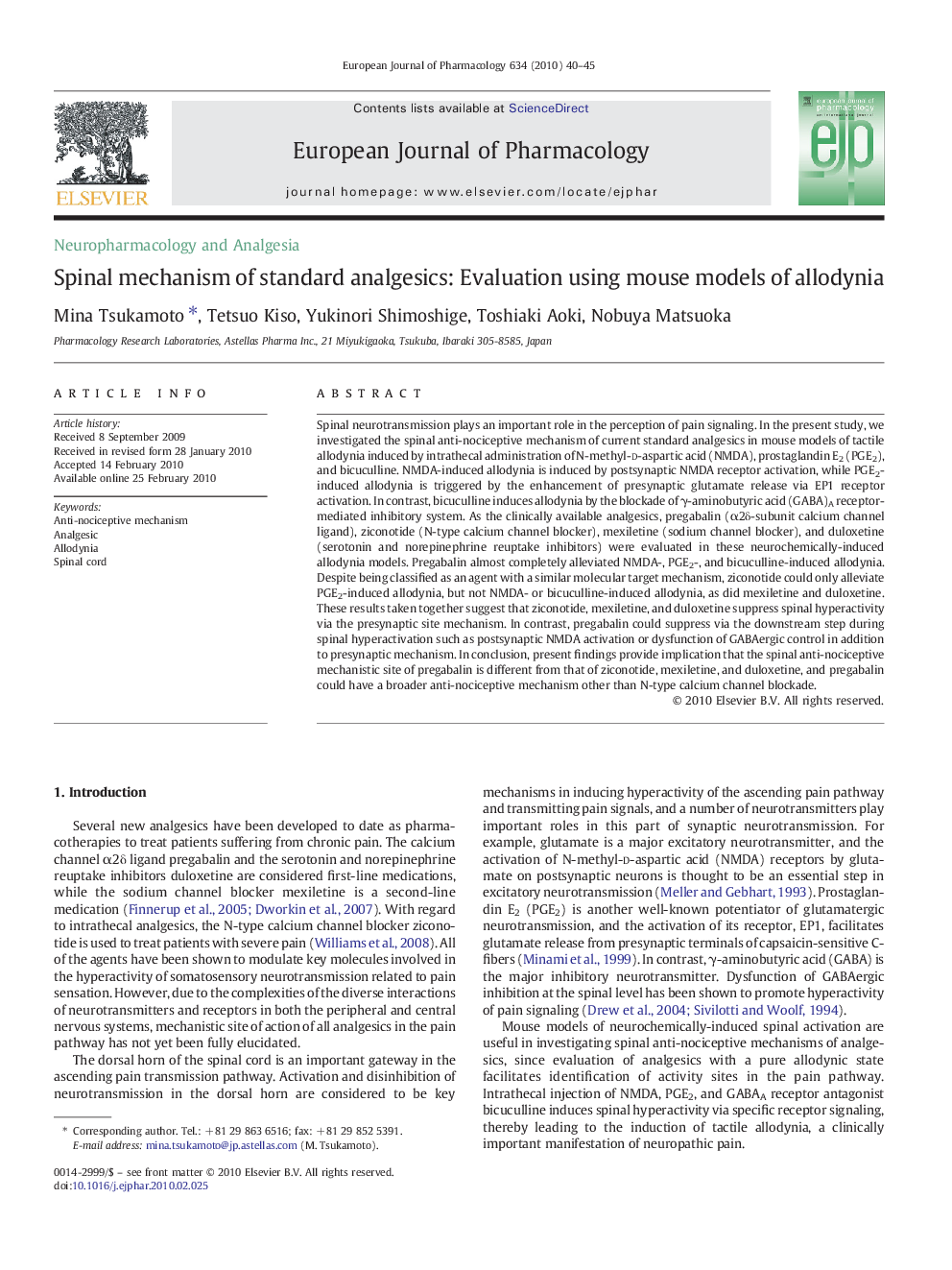| Article ID | Journal | Published Year | Pages | File Type |
|---|---|---|---|---|
| 2533554 | European Journal of Pharmacology | 2010 | 6 Pages |
Spinal neurotransmission plays an important role in the perception of pain signaling. In the present study, we investigated the spinal anti-nociceptive mechanism of current standard analgesics in mouse models of tactile allodynia induced by intrathecal administration of N-methyl-d-aspartic acid (NMDA), prostaglandin E2 (PGE2), and bicuculline. NMDA-induced allodynia is induced by postsynaptic NMDA receptor activation, while PGE2-induced allodynia is triggered by the enhancement of presynaptic glutamate release via EP1 receptor activation. In contrast, bicuculline induces allodynia by the blockade of γ-aminobutyric acid (GABA)A receptor-mediated inhibitory system. As the clinically available analgesics, pregabalin (α2δ-subunit calcium channel ligand), ziconotide (N-type calcium channel blocker), mexiletine (sodium channel blocker), and duloxetine (serotonin and norepinephrine reuptake inhibitors) were evaluated in these neurochemically-induced allodynia models. Pregabalin almost completely alleviated NMDA-, PGE2-, and bicuculline-induced allodynia. Despite being classified as an agent with a similar molecular target mechanism, ziconotide could only alleviate PGE2-induced allodynia, but not NMDA- or bicuculline-induced allodynia, as did mexiletine and duloxetine. These results taken together suggest that ziconotide, mexiletine, and duloxetine suppress spinal hyperactivity via the presynaptic site mechanism. In contrast, pregabalin could suppress via the downstream step during spinal hyperactivation such as postsynaptic NMDA activation or dysfunction of GABAergic control in addition to presynaptic mechanism. In conclusion, present findings provide implication that the spinal anti-nociceptive mechanistic site of pregabalin is different from that of ziconotide, mexiletine, and duloxetine, and pregabalin could have a broader anti-nociceptive mechanism other than N-type calcium channel blockade.
